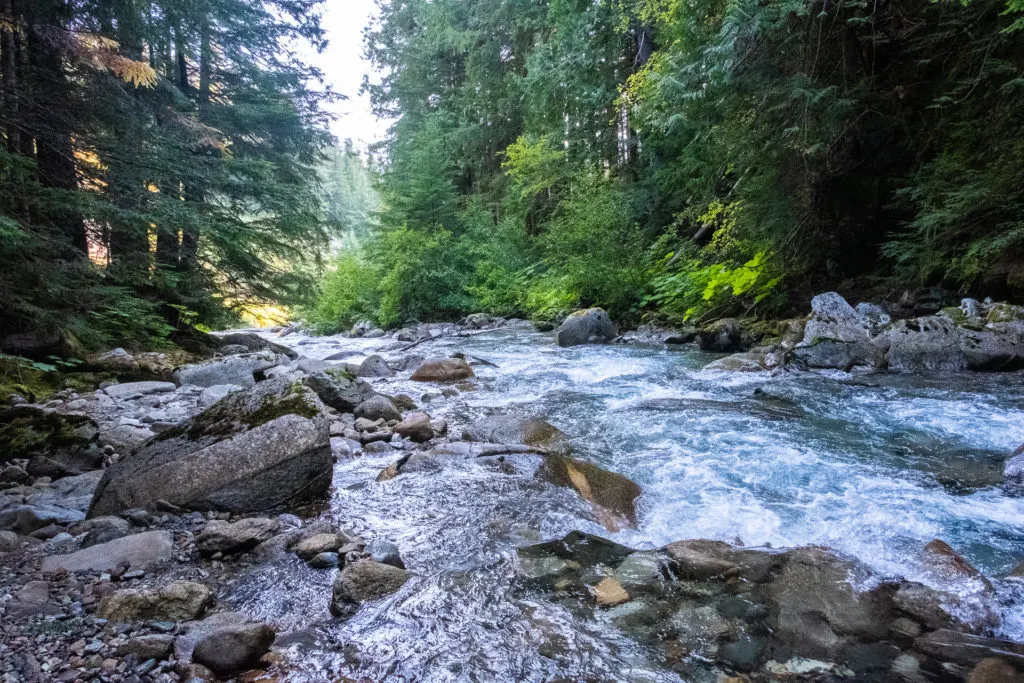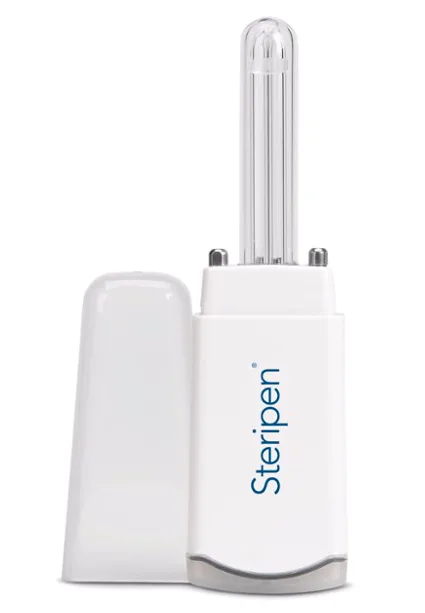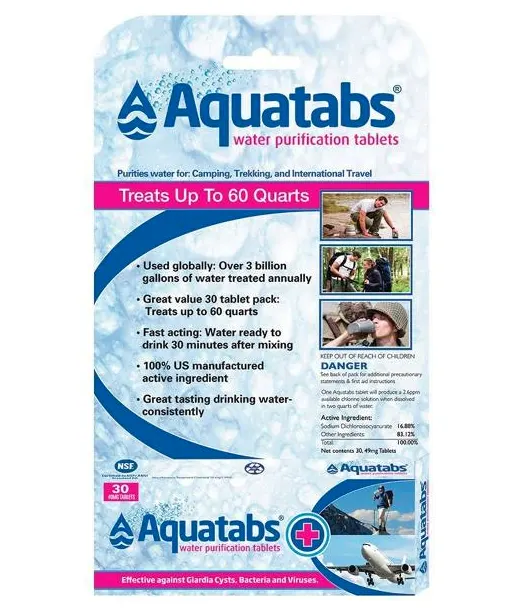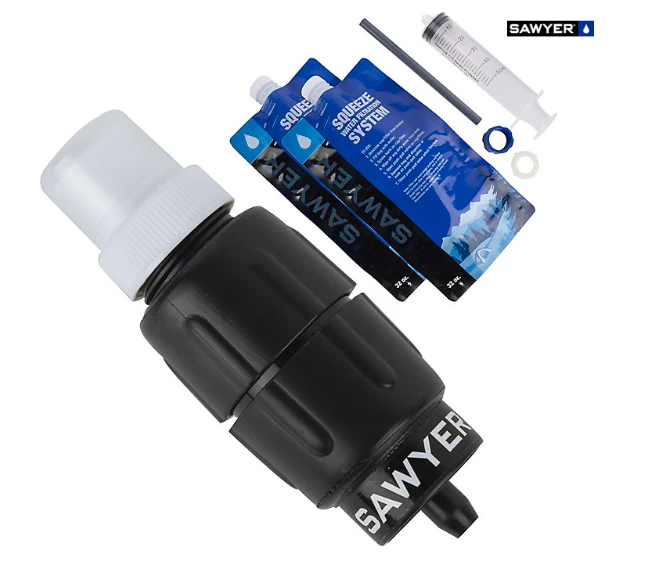Up to 50% Clearance Clothing & Footwear + Extra 25% Off REI Outlet.

It’s probably safe to say that more than just backpackers are looking for advice on water filters right now. The worldwide pandemic that is Covid-19 has a lot of people scrambling for emergency supplies and survival gear. But whether you’re a seasoned outdoors person or simply want to be prepared at home, there are a few things you should know about backpacking water filters and how they’re different.
And if you’re wondering why you should bother filtering and purifying your water in the great outdoors in the first place, here’s one good reason: diarrhea. Also parasites. And vomiting. One sip of water contaminated with viruses, bacteria, or protozoa can mean serious gastrointestinal distress. We’re talking giardia, rotavirus, and dysentery. Trust us when we say you do not want to put up with these things at home or in the backcountry. So drink up, but drink up wisely.
Types of Backpacking Water Filters and Purifiers
There are essentially three types of water filters and purifiers (four if you count boiling): UV purifiers, chemical tablet purifiers, and filters. And each one is not only different in its own right but plays a different role in purification and filtration.

UV-C Purifiers
We’re talking about more than just the power of the sun, here. UV purifiers are different. They typically come in “pen” form. As in, a battery-powered wand-type device (or in the case of the Larq water bottle that we so love, a light embedded in a lid) that you expose water to and that kills bacteria and viruses. Yes, bacteria and viruses. And Parasites (including nasty ol’ cryptosporidium cysts). Only UV purifiers and boiling can do that. And UV purifiers only take a minute or two to use depending on how much water you’re trying to purify.
- Pros: Filters water for one or two people quickly, easy to use, kills all viruses and bacteria
- Cons: Takes longer to treat large amounts of water, doesn’t filter out dirt or large particles, are more expensive than other methods, requires batteries

Chemical Purifiers
The word chemical is often perceived negatively, but it shouldn’t always be, because plenty of chemicals out there are good chemicals. Like the kind that kill bacteria and viruses in your water. Chemical purifiers come in tablet or liquid form and are typically added to larger quantities of water. Some, like Iodine drops, may leave a bad taste in the water, but most tablets don’t alter the flavor of the water at all. They kill bacteria in a liter of water in about 30 minutes, generally speaking, making backcountry water safe to drink. Keep in mind, though that these types of purifiers don’t kill parasites like cryptosporidium cysts, which are often found in higher quantities the closer you are to civilization, which can still make you sick.
- Pros: Easily purifies large amounts of water at a time with little effort, inexpensive
- Cons: Doesn’t kill parasites, doesn’t filter out dirt or large particles, slow

Water Filters
Filters, like the name implies, are devices that physically filter out the bad stuff in your water, including dirt and debris. And while they do filter out bacteria and parasites like cryptosporidium cysts, filters don’t have the capacity to filter out viruses, even if the filter size is under .2 microns and contains built-in iodine resins. That said, if you want to be safe, they are best paired with a chemical purification method to ensure that viruses, parasites, and bacteria are all taken care of. Filters are available in a wide range of designs, from tabletop pitchers to straw-like devices, pumps to gravity filters.
- Pros: Filters out bacteria and protozoa like cryptosporidium cysts plus debris
- Cons: Doesn’t filter out viruses, is time-consuming and often labor-intensive, need to be replaced every few hundred liters.
How to Purify your Water in the Outdoors
If you do need to filter or purify freshwater in the outdoors (say from a stream, lake, or river), Take it step by step. First, ensure the water isn’t downstream from a campground or farm if you can (that’s gonna be some nasty water), then clarify the water before filtering or purifying it. That typically involves running it through a filtration device like a bandana or coffee filter before actually treating it. Clarifying will help filter out the big stuff like sand and debris and dirt, including smaller particles that you might not be able to see.
Next, kill all those infectious microorganisms by purifying the water. Boil your water or use a UV-C pen to kill all the baddies. If that’s not an option, the CDC recommends doubling up: Use a backpacking water filter and a chemical purification method to ensure you get the most purified water possible. Whatever method you use, be sure to follow the directions on the package. Shortcuts = giardia. And clear ≠ clean. Even if the water is from what looks like a pristine waterfall or mountain stream, it can still be swimming with any number of things that could make you sick.
8 Backpacking Water Filters and Purifiers
Need some ideas for quality water filters and purifiers to get you started? These are some of the most popular and well-reviewed options on the market (some of which we’ve used and tested ourselves).
UV Filters
- Larq Water Bottle: Just hit the “Adventure Mode” button, give the bottle a shake, and in two minutes: purified water.
- SteriPEN Ultralight UV Purifier: Swirl this pen around in clarified water for a minute and voila! Purified water.
Chemical Purifiers
- MSR Aquatabs Purification Tablets: Sodium Dichlorisocyanurate purifies, so there’s no bitter taste of iodine.
- Katadyn Micropur Purification Tablets: Sodium chlorite is the main purification ingredient here (so no iodine taste).
Water Filters
- Sawyer Micro Squeeze Filter: The classic squeeze-through filter is small and super packable.
- Katadyn BeFree 3L Gravity Filter: Hang it and forget it. Then come back to 3 liters of filter water.
- LifeStraw Universal Bottle Adaptor Kit: This filter cap screws on to any wide-mouth Nalgene.
- MSR Thru-Link Inline Filter: Designed for use with a hydration bladder, just hook up to your water line and go.
Water Purifiers and Filters in one
We did a whole post comparing several new portable water purifier bottles that are also filters here. So if you’re looking for an all-in-one solution, look no further! Among them: the GRAYL, RapidPure, and Epic.
Bottom Line
If it’s time to replace that old backpacking water filter or finally stock one in your emergency supply kit, we hope we helped demystify the whole water purification conundrum for you. Do you have a fave water filter or purification system? Or do you just sip straight from the stream and cross your fingers (if so, you’re braver than we are)? Let us know! And wander on (even if you’re wandering closer to home these days)!
•
*This post contains affiliate links, which means we may receive .2 microns of any sales that result from this post. Happy drinking!
Only UV purifiers, boiling, and water filters as small or smaller than .2 microns neutralize protozoa and pathogens like cryptosporidium cysts that can be found in untreated water. Chemical water purifiers do not kill cryptosporidium cysts.
UV purifiers, chemical purifiers, water filters and boiling all kill bacteria that can be found in untreated water.
UV purifiers, chemical purifiers and boiling all kill viruses that can be found in untreated water. Water filters are the only method that does not filter viruses.
That depends on your individual needs, but boiling water and using a UV purification device are the only methods that neutralize bacteria, viruses, and pathogens and protozoa like cryptosporidium cysts. The CDC recommends if you’re not boiling or using UV to sterilize untreated water found in the outdoors that you use a water filter and chemical purification together for best results.
Alisha is a freelance outdoor journalist and photographer based in Ogden, UT. She loves backpacking, hiking, mountain biking, kayaking and snowboarding (even though she’s terrible at it). She’s also pretty sure she’s addicted to coffee. alishamcdarris.com
